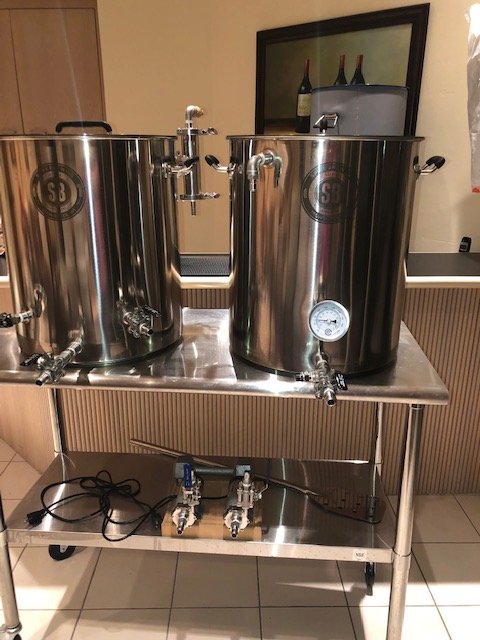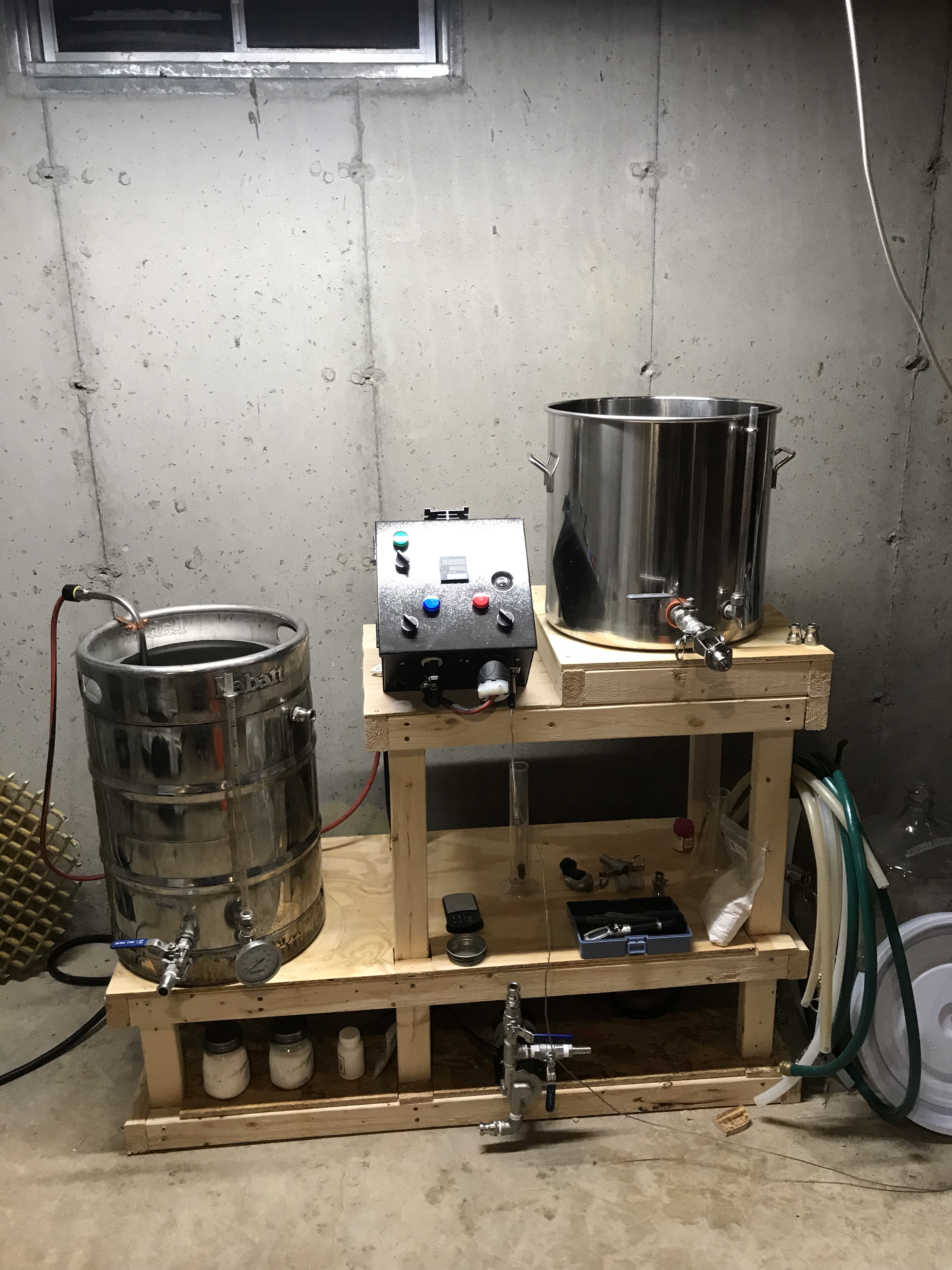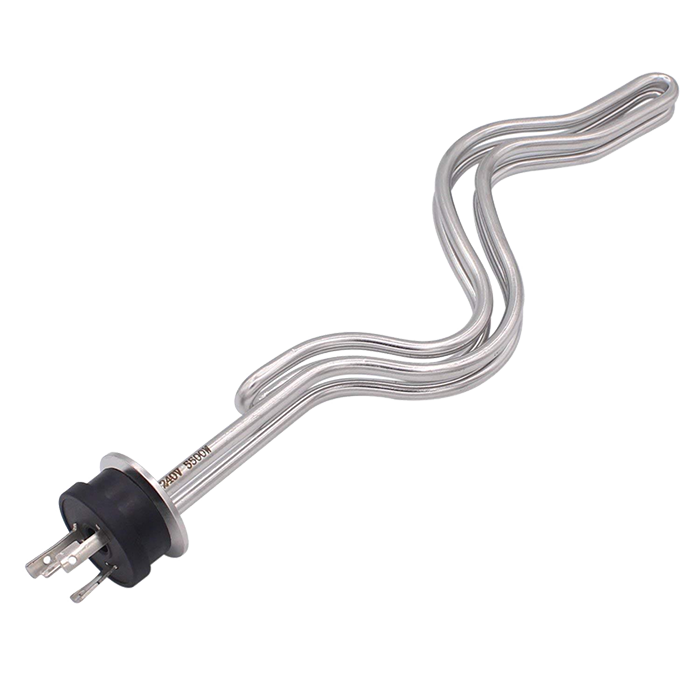LazyPasta
Active Member
I am interested in building a 2-vessel system to reduce the amount of equipment and also reduce the amount of time in my brew day. I was about to pull the trigger on High Gravity's Wort Hog 10 gallon 2-vessel system (https://www.highgravitybrew.com/sto...ric-Wort-Hog-10-gallon-2-Vessel-445p10094.htm) but I realized that this may not be compatible with 5 gallon batches. This system splits the total volume of water between the brew kettle and the mash tun, and for some 5 gal batches the boil coil would not be submerged in the kettle. The reality is I will be mostly doing 5 gallon batches, so I want that capability.
My first thought was to install a rims tube on the Mash tun so that when I'm only doing 5 gallon batches, I will circulate within the mash tun using the rims tube and not have to worry about the boil coil at all. When doing 10 gallon batches, I'll have enough water volume to circulate between the two vessels and incorporate the boil coil. The rims tube wouldn't be needed. Dave at High Gravity said that he also pours a small amount of cold water on top of his drained grains to somewhat sparge a little more sugar out of the mash tun. While very high efficiency isn't required for me, if something simple like that helps, I'd be willing to give it a try. Maybe mashing in with your full volume of water minus 1 gallon - then when the 60 minute recirculating mash is done, heat the 1 gallon fresh water in the brew kettle and add to the top of the mash. Then as you are draining your mash tun to the kettle, the last bit of water to go through the grains would be more diluted.
I am looking for insight for how else this may be done, and what others are doing. It seems that if I go my route, I will have two different brewing routines for different batch sizes. Maybe this 2-vessel system isn't the most effective for both 5 and 10 gallon batches? Maybe there is a different route altogether. I would prefer not to use a single vessel BIAB (I'm trying to get away from lifting dripping bags around), and I don't want the longer brew day associated with 3 vessels and fly sparging.
Thanks in advance!
My first thought was to install a rims tube on the Mash tun so that when I'm only doing 5 gallon batches, I will circulate within the mash tun using the rims tube and not have to worry about the boil coil at all. When doing 10 gallon batches, I'll have enough water volume to circulate between the two vessels and incorporate the boil coil. The rims tube wouldn't be needed. Dave at High Gravity said that he also pours a small amount of cold water on top of his drained grains to somewhat sparge a little more sugar out of the mash tun. While very high efficiency isn't required for me, if something simple like that helps, I'd be willing to give it a try. Maybe mashing in with your full volume of water minus 1 gallon - then when the 60 minute recirculating mash is done, heat the 1 gallon fresh water in the brew kettle and add to the top of the mash. Then as you are draining your mash tun to the kettle, the last bit of water to go through the grains would be more diluted.
I am looking for insight for how else this may be done, and what others are doing. It seems that if I go my route, I will have two different brewing routines for different batch sizes. Maybe this 2-vessel system isn't the most effective for both 5 and 10 gallon batches? Maybe there is a different route altogether. I would prefer not to use a single vessel BIAB (I'm trying to get away from lifting dripping bags around), and I don't want the longer brew day associated with 3 vessels and fly sparging.
Thanks in advance!
Last edited:





















































![Craft A Brew - Safale BE-256 Yeast - Fermentis - Belgian Ale Dry Yeast - For Belgian & Strong Ales - Ingredients for Home Brewing - Beer Making Supplies - [3 Pack]](https://m.media-amazon.com/images/I/51bcKEwQmWL._SL500_.jpg)






